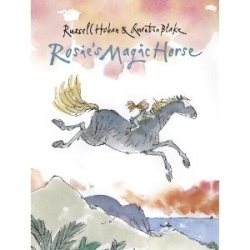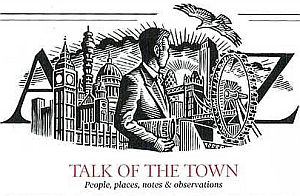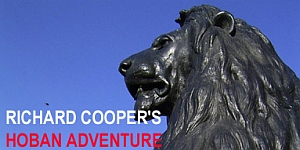Royal College of Art, South Kensington
(Amaryllis Night & Day)
On the train from Hammersmith I sat opposite a man reading a supplement from the Sunday Times whose cover featured a picture of an attractive brown-haired woman with a fruity smile and the words, “Could this woman turn you on to poetry?”
At South Kensington I walked from the station along the Cromwell Road in honour of Sarah Varley who prefers the open-air walk to the long and echoey subway. I personally prefer the subway, not least because the acoustics are magnificent for the buskers who frequent the tunnel, and who are almost always of a very high quality. As I walked along the street I tried to bear in mind that there was an opposite kind of world just below my feet in which people’s footsteps and music in a variety of styles from many different instruments echoed.
On my way to the RCA I walked up Exhibition Road (not, as I mistakenly call it, Exhibition Row, in confusion with the Bob Dylan masterpiece Desolation Row), the home of the hard core of major London museums. The buildings are very old, very big and mostly stunningly beautiful, especially the Natural History Museum, which has to be one of the most exquisite structures ever conceived, and the slightly less extravagant Victoria & Albert Museum, where I would be heading shortly. One section of the V&A along this road still bears damage from the London Blitz – great chunks taken out of the walls and left deliberately unrepaired, leaving it looking like some ancient ruin.
Just up from the V&A was the Church of Jesus Christ of Latterday Saints, a tall, thin building with a huge golden “spire” rising along its centre. On the other side of the road was a thin, sallow man speaking into a loud-hailer. Through speakers strapped to his body his voice called on the few passers-by in a vaguely rhythmic and very thick scouse accent to “Follow the direction of Jesus Christ... You’re going in the wrong direction… Come and get back in the right direction.”
I turned the corner into Kensington Gore – an actual road, but which, as Roswell Clark mentions at some point, is a pet name given by theatrical types to stage blood – and walked past a man in a fluorescent vest bringing an armful of assorted, dusty debris from an old building and dumping it on the pavement. Ahead of me another of London’s most beautiful buildings, the Royal Albert Hall, suggested itself in all its Victorian curves. Opposite the concert hall itself the gold Albert Memorial glittered in the crisp, blue morning. Posters outside the Albert Hall advertised various entertainments in the offing, including a solo concert by Art Garfunkel and a season of shows called Saltimbanco by the Cirque du Soleil, which had as its logo a clown-type figure who looked like a rather more handsome version of Mr Punch. The poster was bright yellow and the director of the show was a man by the decidedly Hobanesque moniker of Franco Dragone.
Just up from the Albert the RCA loomed. It is, frankly, an ugly tower block of a building, all anonymous grey, angular and depressing, the concrete dark and pitted like a cardboard box left out in the rain. To someone who'd never been inside, it seemed the most unlikely place to either teach or learn art; then again, now that I looked at it more closely, the windows seemed unusually large, and the location was of course fantastic, making it easy to imagine having a much more inspirational experience from inside one of the rooms looking out.
As I approached, wondering how and where to leave the quote, my ambivalence towards this ambivalent quote almost talked me out of dropping it at all. The quote – the entire second chapter of Amaryllis Night and Day – is narrated by the central character Peter Diggs, an artist who teaches part-time at the RCA, and although not my favourite Hoban book, this is one of the passages I most often find myself thinking about – especially on a bad day when my own writing isn’t coming together. Do I have the empty spaces, but no talent, or do I have the talent but no empty spaces? How do I know, indeed, if I have either? Then again, did Diggs himself, when he pursued the beautiful Amaryllis, have any idea – as he explains when he meets Roswell Clark in The Bat Tattoo – that finally winning her would have the ironic effect of filling his empty spaces and stop him from painting? This in turn led me on to another of my favourite worries, that of whether artists, of any description, can ever be truly happy in a “normal”, stable relationship, or whether loneliness and the pursuit of happiness, rather than obtaining it, the constant breaking and re-making of life, are essential for creativity. All things are cyclical, I concluded: some days you have more empty spaces than others.
Outside the RCA a number of bicycles were chained up. I hovered again, hovering somewhere between nervous and nonchalant, until I saw a bike I could attach the quote to without it blowing away. I did it and walked off quickly down Kensington Gore, still wondering if it was really the right thing to do or whether it was too specific a drop. Whoever the bike belonged to, I really hoped they would take it the right way.
On the way back towards the museums I passed the building again where the fluorescently-vested characters were bringing out more detritus and dumping it on the pavement. Another man came by, taller, more handsome, better-spoken, obviously the foreman. “Alright, chaps?” he said. “Alright,” said one of the men, “how’s it going?” “Not too bad,” said the foreman, and nodding at the pile of debris on the pavement added, “This looks like fun.”
Just up from the Albert the RCA loomed. It is, frankly, an ugly tower block of a building, all anonymous grey, angular and depressing, the concrete dark and pitted like a cardboard box left out in the rain. To someone who'd never been inside, it seemed the most unlikely place to either teach or learn art; then again, now that I looked at it more closely, the windows seemed unusually large, and the location was of course fantastic, making it easy to imagine having a much more inspirational experience from inside one of the rooms looking out.
As I approached, wondering how and where to leave the quote, my ambivalence towards this ambivalent quote almost talked me out of dropping it at all. The quote – the entire second chapter of Amaryllis Night and Day – is narrated by the central character Peter Diggs, an artist who teaches part-time at the RCA, and although not my favourite Hoban book, this is one of the passages I most often find myself thinking about – especially on a bad day when my own writing isn’t coming together. Do I have the empty spaces, but no talent, or do I have the talent but no empty spaces? How do I know, indeed, if I have either? Then again, did Diggs himself, when he pursued the beautiful Amaryllis, have any idea – as he explains when he meets Roswell Clark in The Bat Tattoo – that finally winning her would have the ironic effect of filling his empty spaces and stop him from painting? This in turn led me on to another of my favourite worries, that of whether artists, of any description, can ever be truly happy in a “normal”, stable relationship, or whether loneliness and the pursuit of happiness, rather than obtaining it, the constant breaking and re-making of life, are essential for creativity. All things are cyclical, I concluded: some days you have more empty spaces than others.
Outside the RCA a number of bicycles were chained up. I hovered again, hovering somewhere between nervous and nonchalant, until I saw a bike I could attach the quote to without it blowing away. I did it and walked off quickly down Kensington Gore, still wondering if it was really the right thing to do or whether it was too specific a drop. Whoever the bike belonged to, I really hoped they would take it the right way.
On the way back towards the museums I passed the building again where the fluorescently-vested characters were bringing out more detritus and dumping it on the pavement. Another man came by, taller, more handsome, better-spoken, obviously the foreman. “Alright, chaps?” he said. “Alright,” said one of the men, “how’s it going?” “Not too bad,” said the foreman, and nodding at the pile of debris on the pavement added, “This looks like fun.”









 On 4 February 2012 the Slickman A4 Quotation Event celebrated
On 4 February 2012 the Slickman A4 Quotation Event celebrated 


 In 2005 the first international convention for Russell Hoban fans took place in London, and was marked by the publication of a fantastic 48-page booklet featuring exclusive contributions from innumerable fans and associates including novelist David Mitchell and actress Glenda Jackson. A wonderful memento of the event, it's also a beautiful collector's item and must-have for any Hoban fan. Although in limited supply, copies of the booklet are still available at £6.00 each plus p&p. Order direct from
In 2005 the first international convention for Russell Hoban fans took place in London, and was marked by the publication of a fantastic 48-page booklet featuring exclusive contributions from innumerable fans and associates including novelist David Mitchell and actress Glenda Jackson. A wonderful memento of the event, it's also a beautiful collector's item and must-have for any Hoban fan. Although in limited supply, copies of the booklet are still available at £6.00 each plus p&p. Order direct from  Russell Hoban turned 86 on 4 February 2011 and fans celebrated in traditional style by leaving quotes from his books in public places. Browse their quotes
Russell Hoban turned 86 on 4 February 2011 and fans celebrated in traditional style by leaving quotes from his books in public places. Browse their quotes  To celebrate 30 years in print of Russell Hoban's most famous novel
To celebrate 30 years in print of Russell Hoban's most famous novel 






No comments:
Post a Comment
Note: only a member of this blog may post a comment.